Wednesday, December 26, 2007Yap: Land of Stone Money
Go to our photo website to see Troy's fabulous Yap photos.
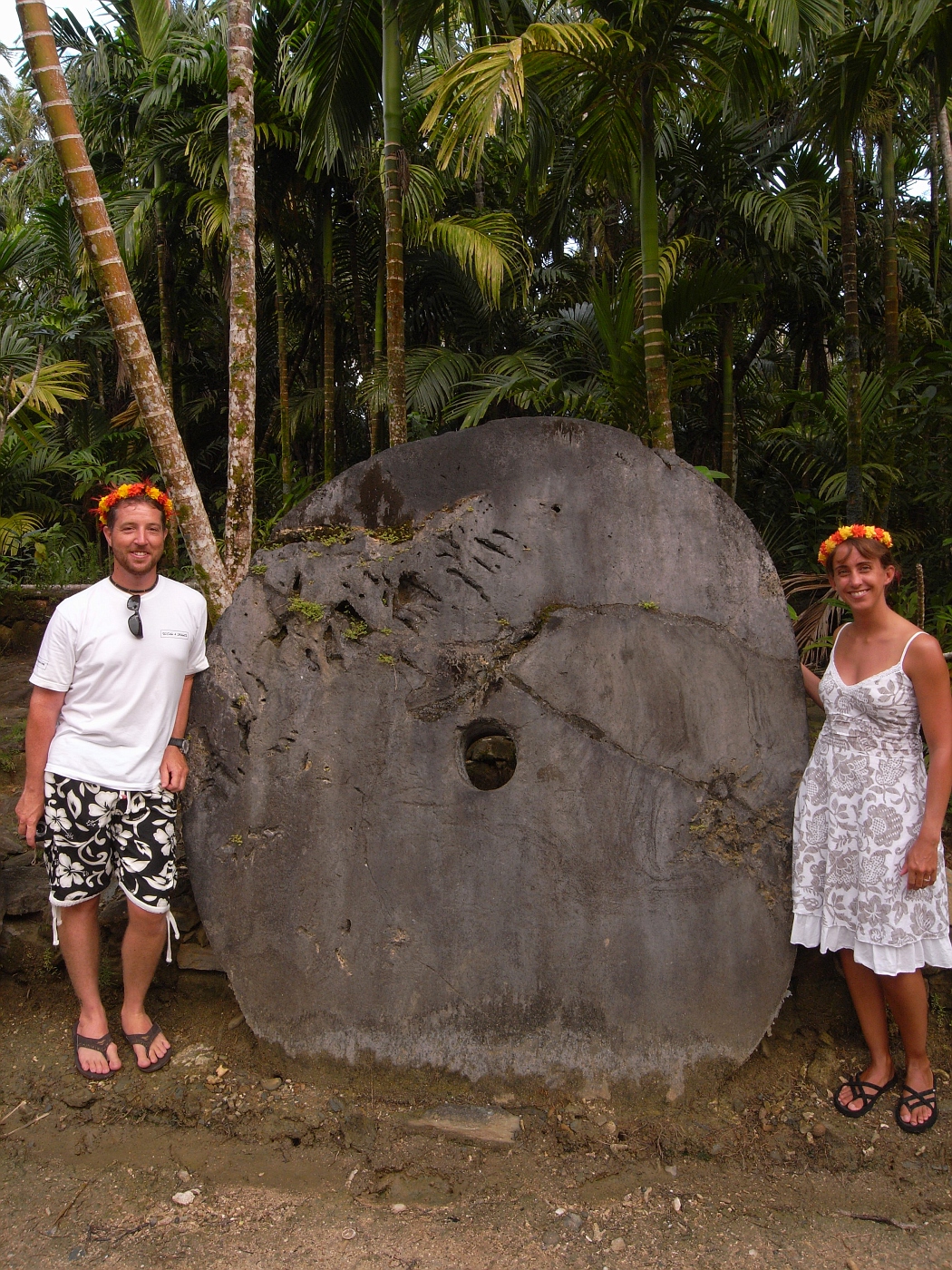 In our travels we have not come across many cultures that have preserved their old traditions and way of life. Most have been influenced by the western world and today's modern technology. But we found one such culture on a tiny island called Yap. The Yapese are still so ingrained in their old traditions that they use stone money for some monetary transactions. Yap is in the close vicinity of Chuuk and Palau, which is where we just spent the last one and a half months, but it is still in the middle of nowhere. In our travels we have not come across many cultures that have preserved their old traditions and way of life. Most have been influenced by the western world and today's modern technology. But we found one such culture on a tiny island called Yap. The Yapese are still so ingrained in their old traditions that they use stone money for some monetary transactions. Yap is in the close vicinity of Chuuk and Palau, which is where we just spent the last one and a half months, but it is still in the middle of nowhere.The stone money is most likely not what you are thinking of. They are not small pieces the size of a quarter made out of stone that you can easily put in your pocket. Their stone money is much, much larger, ranging from two feet to seven feet in diameter weighing several hundred pounds. Definitely not something you can put in your piggy bank. 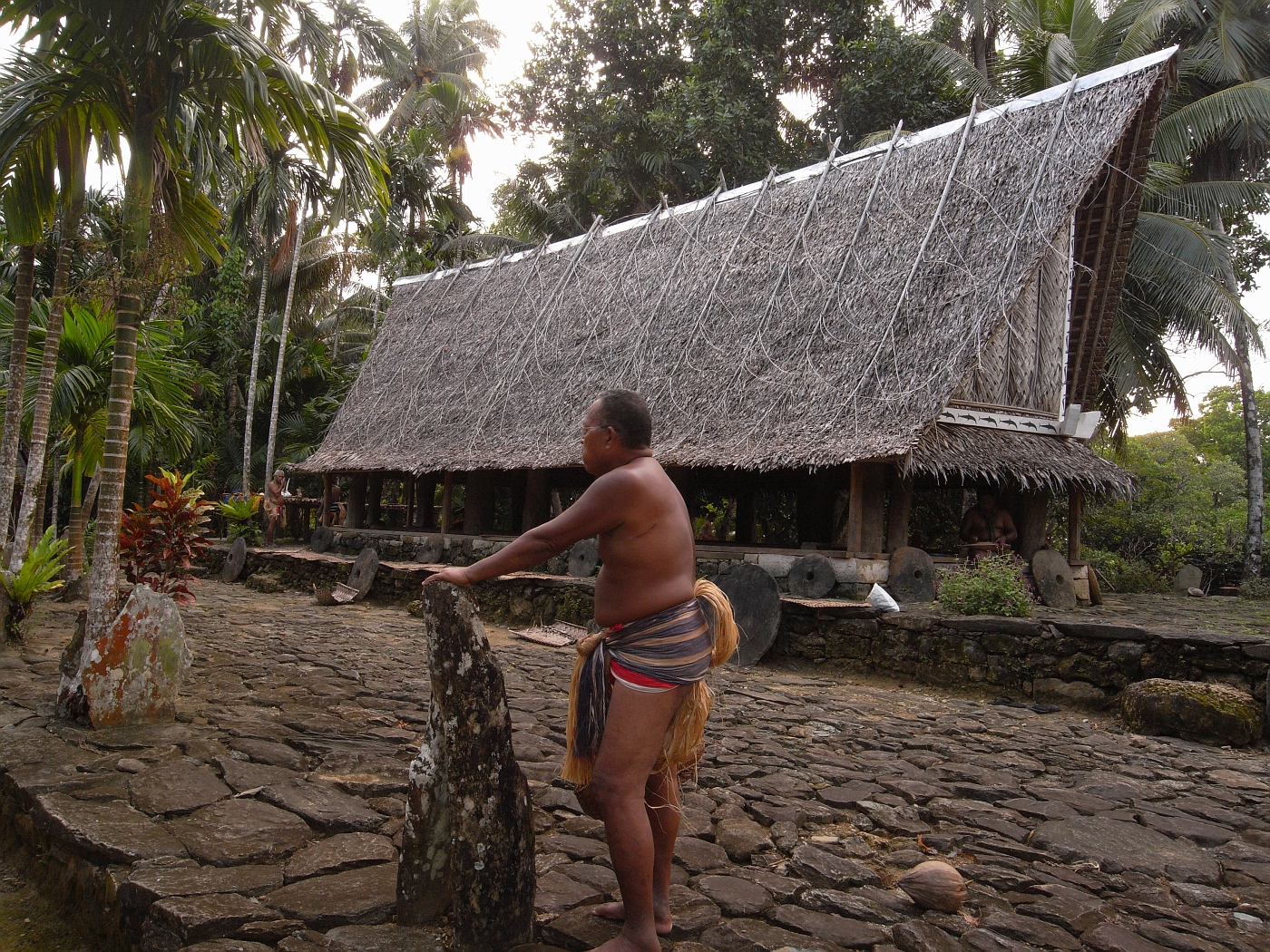 This is the story of how the Yapese came to use stone money: Hundred of years ago an ancient navigator named Fathaan traveled to Palau which was 260 nautical miles south of Yap. There he found glistening limestone which he first cut into the shape of a fish but found the giant shaped pieces too difficult to transport. He then cut the pieces into a crescent moon which he still didn't like. Then he tried cutting them into a full moon with a hole cut in the middle into which was inserted a wooden pole. The pole was hoisted onto the shoulder which made the transport to boats much easier. The journey back to Yap with the round stones was perilous because of the length of the journey and the rough seas. Many men lost their lives in the journey. The Yapese villagers came to realize that the risk involved in acquiring these stone disks made them desirable to have and carried prestige. This is the story of how the Yapese came to use stone money: Hundred of years ago an ancient navigator named Fathaan traveled to Palau which was 260 nautical miles south of Yap. There he found glistening limestone which he first cut into the shape of a fish but found the giant shaped pieces too difficult to transport. He then cut the pieces into a crescent moon which he still didn't like. Then he tried cutting them into a full moon with a hole cut in the middle into which was inserted a wooden pole. The pole was hoisted onto the shoulder which made the transport to boats much easier. The journey back to Yap with the round stones was perilous because of the length of the journey and the rough seas. Many men lost their lives in the journey. The Yapese villagers came to realize that the risk involved in acquiring these stone disks made them desirable to have and carried prestige.Villagers started trading the stone disks for agriculture, farm animals and land just so they could have these "full moons with the hole in the middle". Hundreds of Yapese followed Fathaans example trying to get these stone disks from Palau with many hundreds of sailors dying in the journey. The dangers attributed to the journey made the stone disks more valuable in trade.  The worth of the stone disk was partly based on size and quality of cut but the more sailors that died in the journey, the more the stone disk was worth. The stone disks at this point had taken on the characteristics of money: they were a store of value, a medium of exchange and a unit of account. The worth of the stone disk was partly based on size and quality of cut but the more sailors that died in the journey, the more the stone disk was worth. The stone disks at this point had taken on the characteristics of money: they were a store of value, a medium of exchange and a unit of account.Although the stone money is still in use today it is losing it's value. It can be used to settle disputes such as if your teenage son vandalized a neighbors property. Instead of going to court you can give the neighbor stone money. It can also be used to buy a wife or exchanged at a village ceremony. The island also has "stone money banks" which is basically a path or road lined with dozens of pieces of stone money. But the best example of how the locals practice old traditions is in how they dress. Before we arrived in Yap I had read that womens bare thighs were offensive so I made sure to always wear long shorts or skirts to cover mine. But I didn't know what was considered appropriate when it came to womens bare shoulders (in Muslim cultures it is offensive to have knees and shoulders exposed). But as we walked into the local grocery store, I quickly found out the answer. Right next to the Pop Tarts in the cereal aisle is this local woman with her big ol' saggy boobs just hanging out. I don't mean that her top was so skimpy she was falling out .... she had no top on at all. 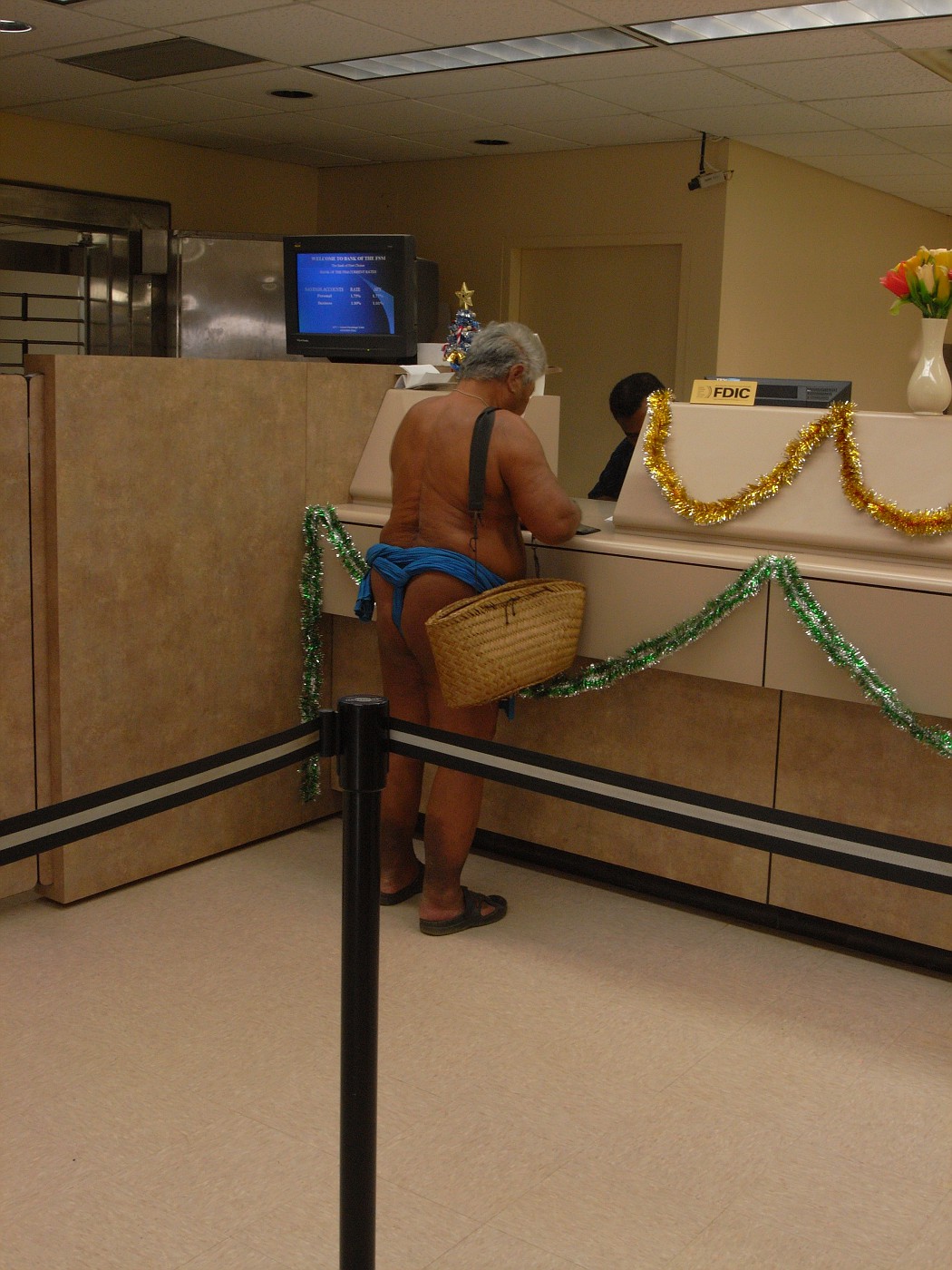 But her thighs were covered! Then walking down the toiletry aisle was an old man, probably in his 70's, wearing what is known locally as a Thu. Imagine what a Japanese sumo wrestler wears: a small piece of loin cloth to cover his privates but his ass cheeks hanging out! Just that and his sandals. After we left the store we walked around the corner and sitting there was a whole gaggle of these topless women just hanging out on the sidewalk. Unfortunately Troy didn't have his camera at the time but he did have it when we went to the bank and got a photo of this lovely fellow in his gorgeous Thue! The thing was, it wasn't that we were so surprised to see the locals in their traditional dress, it was more startling to see them in such modern settings dressed like this. Honestly though, this is something we really respect of the Yappese - keeping their tradition alive while showing us their boobies and ass cheeks! But her thighs were covered! Then walking down the toiletry aisle was an old man, probably in his 70's, wearing what is known locally as a Thu. Imagine what a Japanese sumo wrestler wears: a small piece of loin cloth to cover his privates but his ass cheeks hanging out! Just that and his sandals. After we left the store we walked around the corner and sitting there was a whole gaggle of these topless women just hanging out on the sidewalk. Unfortunately Troy didn't have his camera at the time but he did have it when we went to the bank and got a photo of this lovely fellow in his gorgeous Thue! The thing was, it wasn't that we were so surprised to see the locals in their traditional dress, it was more startling to see them in such modern settings dressed like this. Honestly though, this is something we really respect of the Yappese - keeping their tradition alive while showing us their boobies and ass cheeks!
We did a cultural tour to see the ancient mens houses, resting places, stone money banks and to see a traditional dance. Here all the women were topless. From the young six year olds all the way up to the 70 year old women. Troy and I were so glad my brother-in-law, Ryun, was not with us. He would have been turning every which way saying "Look at the hooters on that grandma! Holy cow, I can't believe I'm looking at the boobs on a 16 year old and I'm not getting arrested." Oh, Ryun, we love you!!! Remember from the Palau blog I talked about the Betlnut? Well, the Yapese are the biggest consumers of it. It is amazing how it is such a huge part of their life. Walking down the hall in the hotel we would come across the maids sitting on the floor preparing their betlenut. The ladies at the reception would have such a big wad of it in their mouth that they could barely answer our questions. The guys at the dive shop would be hanging out with their man bags (called a Way) full of betlenut. The sidewalks and streets are stained red from the massive amount of spit. Chewing it produces so much saliva that they have to use a Pringles can to hold their spit. 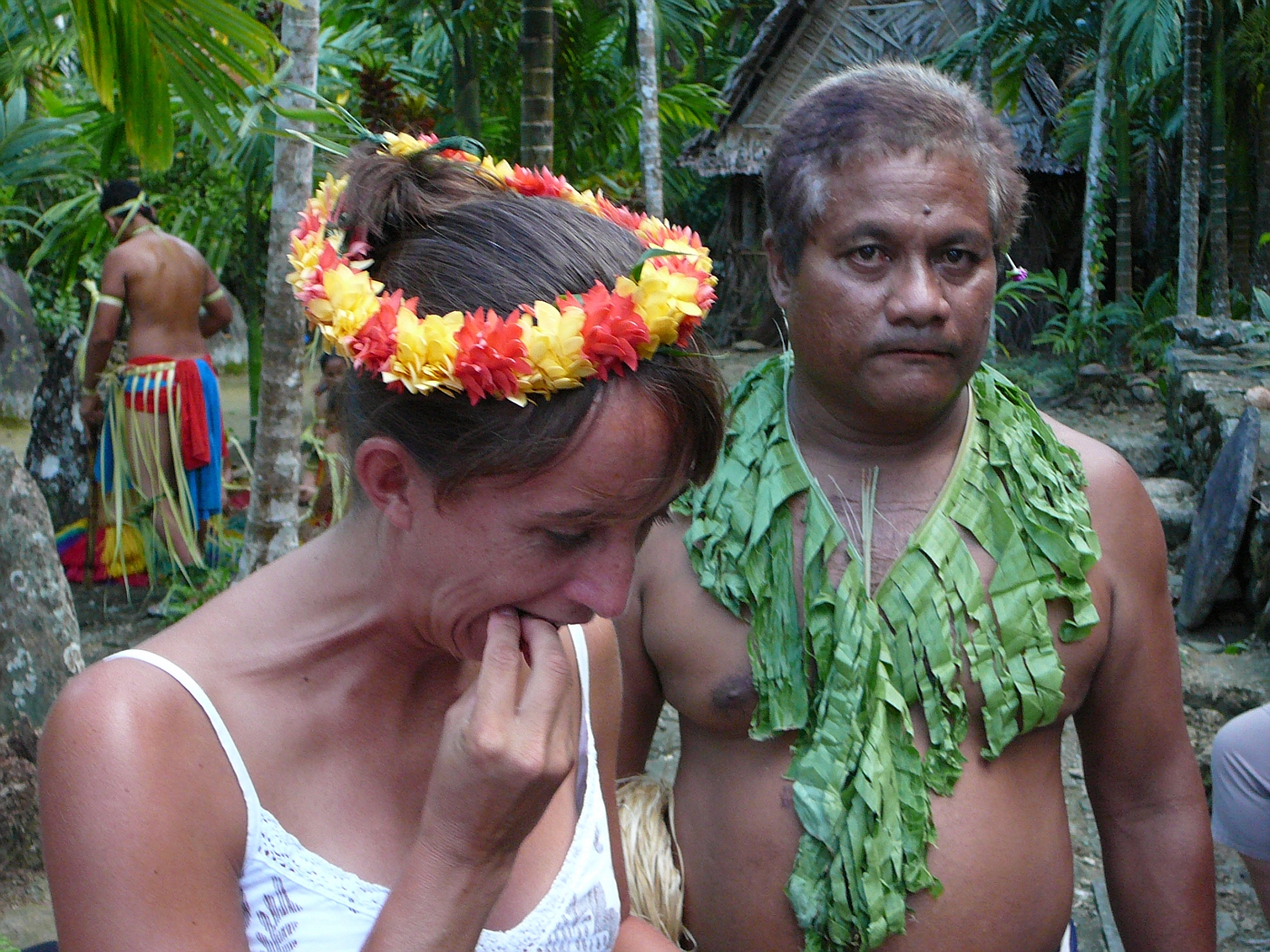 The Yapese would put a rodeo full of Copenhagen chewing cowboys to shame. And of course as the saying goes "When in Rome, do as the Romans do" so we had to give it a go. Troy had a much better time with it then I did. What it came down to was he didn't make a fool of himself. Me on the otherhand....the piece I had was too big for my mouth so I was a mess, drooling and slobbering all over the place. But I did get the buzz and warm fuzzy feeling from it so it wasn't a total loss. The Yapese would put a rodeo full of Copenhagen chewing cowboys to shame. And of course as the saying goes "When in Rome, do as the Romans do" so we had to give it a go. Troy had a much better time with it then I did. What it came down to was he didn't make a fool of himself. Me on the otherhand....the piece I had was too big for my mouth so I was a mess, drooling and slobbering all over the place. But I did get the buzz and warm fuzzy feeling from it so it wasn't a total loss.We thought the people in Palau had bad teeth from chewing it, but the Yapese have them beat hands down. If you remember I told you how it stains the teeth, lips and mouth red and with too much chewing it wears the teeth down to nubs. 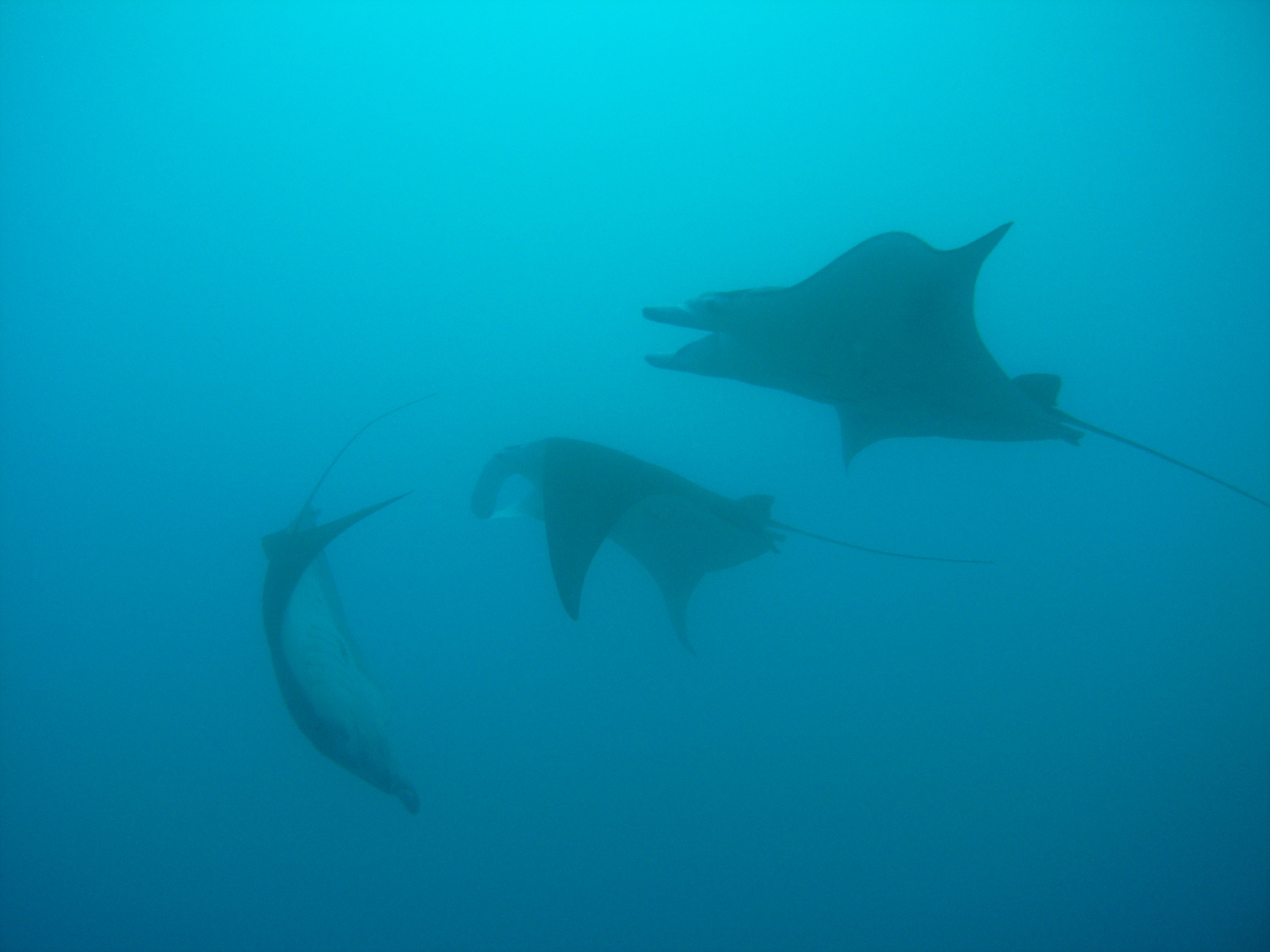 We came across a German who knew nothing about the betlenut and as he went through immigration at the airport he was a little freaked out because he thought the island was inhabited by vampires. Another European thought the locals were fist fighting all the time because of all the "bloody mouths". I never, ever though I would say this but it was nice to get away from this disgustingness and to get around normal people who smoked! Troy says he actually got used to seeing it though and still might prefer it over smoking. We came across a German who knew nothing about the betlenut and as he went through immigration at the airport he was a little freaked out because he thought the island was inhabited by vampires. Another European thought the locals were fist fighting all the time because of all the "bloody mouths". I never, ever though I would say this but it was nice to get away from this disgustingness and to get around normal people who smoked! Troy says he actually got used to seeing it though and still might prefer it over smoking.So enough about the island and people of Yap. The main reason we came to Yap was for..... you guessed it, the diving!!!!!! But not for the reefs or the fish life, Yap is known for the Manta Rays. They are these amazingly huge, beautiful, graceful creatures. You never tire of seeing them and just get giddy when they come around. There are a few channels near the island that attract the Mantas after they have been out to sea feeding. 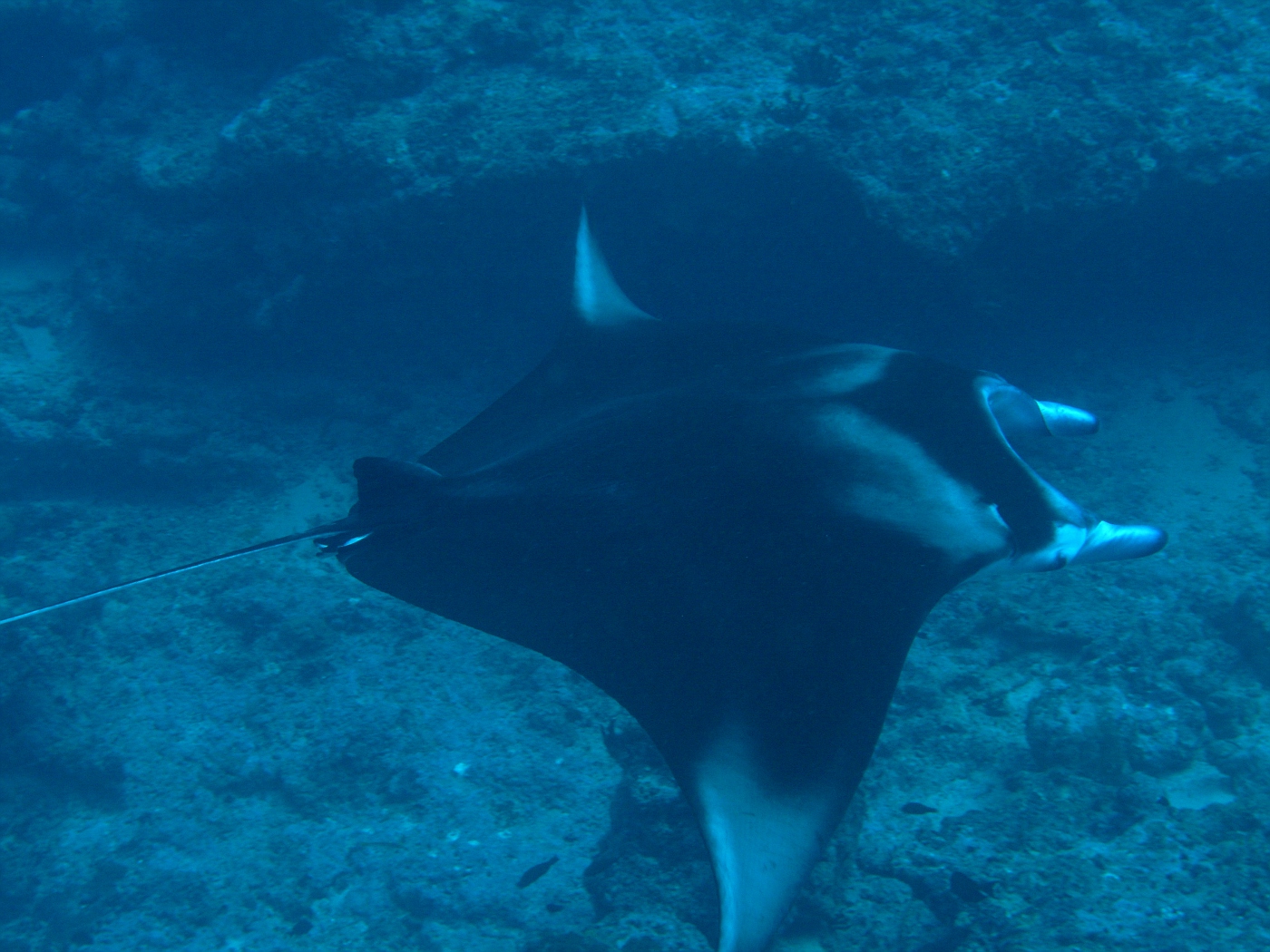 Not only do they come in from the open ocean to get cleaned but they also come to mate, so we would see groups of them at a single time. They are also very curious and love divers bubbles so they come in very close, sometimes just inches from your head. As much as you want to, obviously you're not allowed to touch them. This causes them to go away and stay away for days, not to mention how much it pisses off the dive guides and other divers. Not only do they come in from the open ocean to get cleaned but they also come to mate, so we would see groups of them at a single time. They are also very curious and love divers bubbles so they come in very close, sometimes just inches from your head. As much as you want to, obviously you're not allowed to touch them. This causes them to go away and stay away for days, not to mention how much it pisses off the dive guides and other divers.We spent our Christmas Eve and Christmas day in Yap. For Christmas Eve dinner we went to a nearby hotel since we were tired of the food where we were staying. Troy got a wild hair up his butt and tried the betlenut martini. It was not good. He described it as a martini glass filled with hairspray with a twist of nastiness garnished with a dash of grossness. But he drank it. 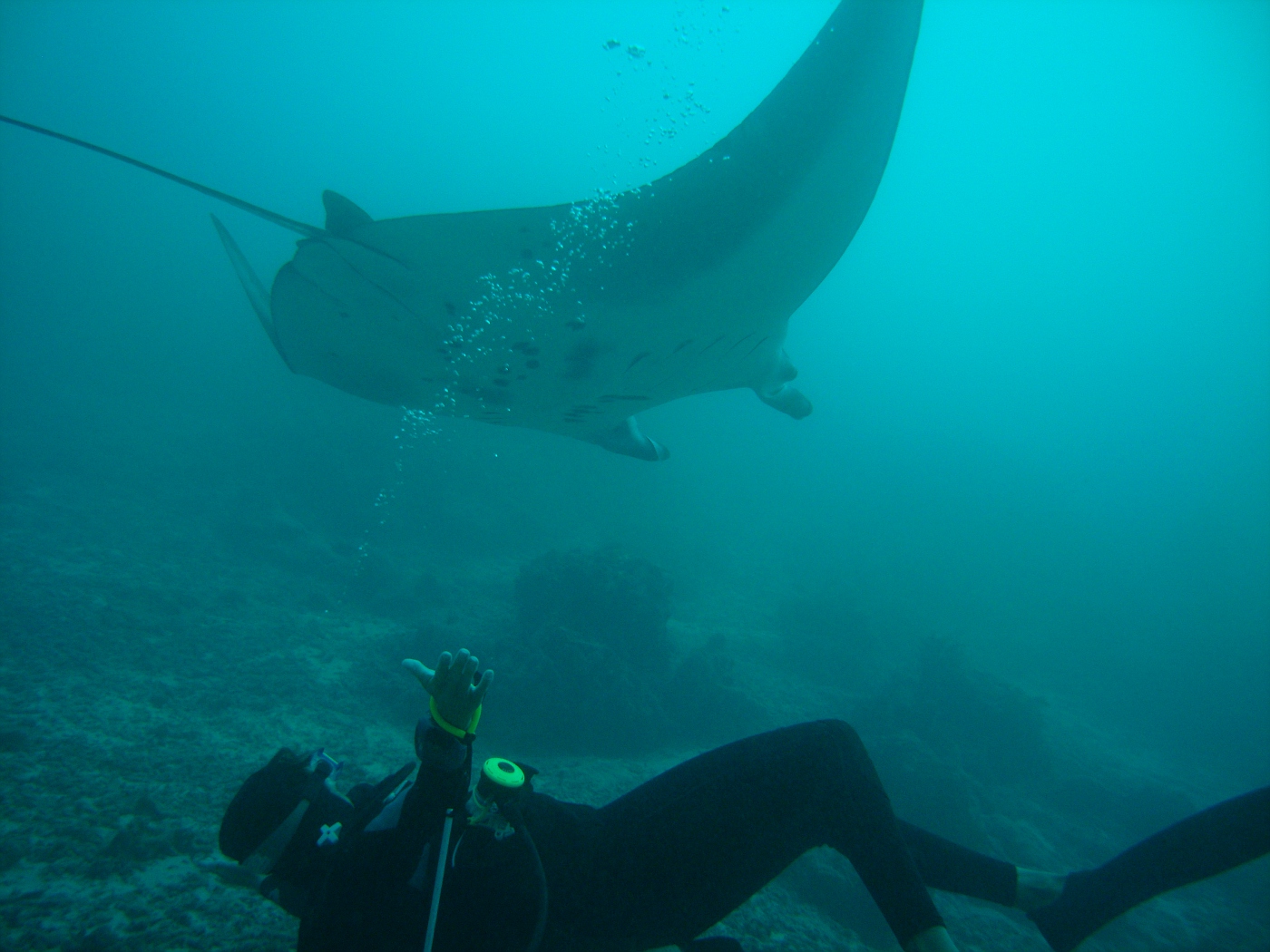 Just a few side notes here, Troy and I have come to learn something about ourselves on our travels: Either we're really goood about pointing out what can be improved (like with dive boats, hotel rooms, restaurants menu) or we have just become really hard to please. You would think on our travels it would be the opposite and we would be happy with anything, but evidently that is not the case. Troy's quote of the day "We are easy to please once things are the way we like them!" Hmmm... not quite sure how this happened. Another thing I have recently noticed about myself is my response when I come across a store, any store. Since September we have not been places where there are many stores to shop at. I'm not a shopper by any means but I have found there is something in my inner being that misses it. For instance, while in Palau we went to an office supply store to find paper to mail a box. I found myself going up and down every aisle looking to see if there was anything I needed. "Ooh, paperclips, I think I need those. What about this printer ink cartridge? Cool, it's even red. Troy look, they have a dry erase board. Should we buy it?" You get the picture. Just a few side notes here, Troy and I have come to learn something about ourselves on our travels: Either we're really goood about pointing out what can be improved (like with dive boats, hotel rooms, restaurants menu) or we have just become really hard to please. You would think on our travels it would be the opposite and we would be happy with anything, but evidently that is not the case. Troy's quote of the day "We are easy to please once things are the way we like them!" Hmmm... not quite sure how this happened. Another thing I have recently noticed about myself is my response when I come across a store, any store. Since September we have not been places where there are many stores to shop at. I'm not a shopper by any means but I have found there is something in my inner being that misses it. For instance, while in Palau we went to an office supply store to find paper to mail a box. I found myself going up and down every aisle looking to see if there was anything I needed. "Ooh, paperclips, I think I need those. What about this printer ink cartridge? Cool, it's even red. Troy look, they have a dry erase board. Should we buy it?" You get the picture.Next stop, Australia and the Great Barrier Reef where we will spend a week diving the outer reefs then we'll rent a car for nine days and drive to who knows where considering it's a ginormous country! Tuesday, December 11, 2007Palau: Home to Jellyfish Lake, Betlenut and Prehistoric Creatures
Go to our photo website to see Troy's fabulous Palau photos.
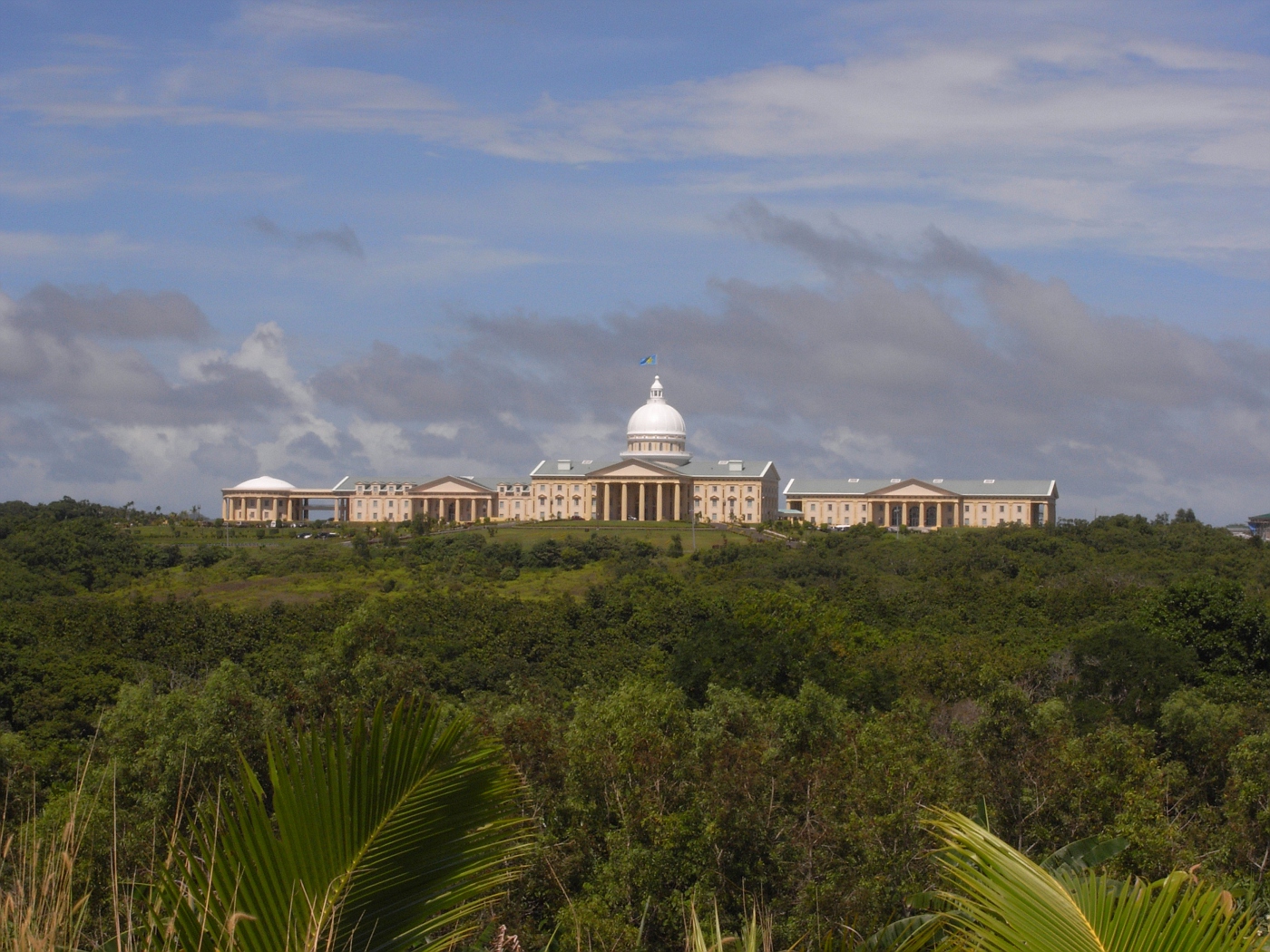 Like some of the places we have traveled to, a lot of people have never heard of Palau. But if you have it’s because you are either a diver or you watch the reality TV show, Survivor. Like Chuuk, this group of small islands is located out in the middle of the Pacific Ocean, a long ways from anything. That’s why internet connection is horrible and Troy can’t get his photos downloaded. So beware, once we get a great connection you will bombarded with about 1000 photos! Ok, maybe not that many, but close to it. Like some of the places we have traveled to, a lot of people have never heard of Palau. But if you have it’s because you are either a diver or you watch the reality TV show, Survivor. Like Chuuk, this group of small islands is located out in the middle of the Pacific Ocean, a long ways from anything. That’s why internet connection is horrible and Troy can’t get his photos downloaded. So beware, once we get a great connection you will bombarded with about 1000 photos! Ok, maybe not that many, but close to it.We loved Palau! The people are very friendly, fabulous weather year round, incredibly gorgeous islands and some of the best diving we have done. It is one of the few places we have been that we could move to and work for a year or two. In fact we inquired about being Dive Masters with the shop we dived with but sadly for us they have already hired for the upcoming season. We also found hitchhiking to be very easy here. So easy even an off duty cop picked us up and took us where we wanted to go. When he pulled over we saw his uniform and thought “Uh oh, he will probably take us downtown… right downtown to the police station!” (Another Troy quote of the day). The only thing we didn’t like about Palau is a huge percent of the locals chew betelnut. It is a green nut, a little bigger then a grape but very fibrous so it can be chewed on for an hour without falling apart. It is a narcotic so the locals are addicted to it. They chew it with a lime or a mint leaf (to get rid of the gross taste) and a piece of a cigarette or coral powder to activate the betlenut. The reason we don’t like it is it turns the teeth a revolting brown and red and wears down the teeth almost to nubs. When you talk to someone that has been chewing this for years, it takes every ounce of willpower to not cringe and look away from this disgusting sight. In fact the guy sitting next to me right now at the internet cafe is getting ready to put a huge wad in his mouth. At least it doesn't stink like cigarette smoke, although the spitting is gross.  Palau also has the most ridiculous Capital building. It is like a miniature White House with a tall white dome and huge porch columns. It is also out in the middle of nowhere surrounded by nothing but hills, jungle, shacks and dirt roads. Most of Palau’s population is on the island of Koror but the capital is miles and miles and miles north. For a country whose population is only 20,000 it is enormous. Just shows what happens when the US gives a country too much money. Palau also has the most ridiculous Capital building. It is like a miniature White House with a tall white dome and huge porch columns. It is also out in the middle of nowhere surrounded by nothing but hills, jungle, shacks and dirt roads. Most of Palau’s population is on the island of Koror but the capital is miles and miles and miles north. For a country whose population is only 20,000 it is enormous. Just shows what happens when the US gives a country too much money.Palau is known locally as Belau and is made up of over 300 islands that stretch out over 400 miles but only eight islands are inhabited, total population of 20,000. Palauian legend has it that a child named Uab was born to a goddess of the sea. As he grew up he had a voracious appetite and all the villagers fed him day and night to satisfy his hunger. He ate so much he grew into an enormous giant. The villagers were threatened with famine so one night while Uab was sleeping, they tied him up and set him ablaze. When he woke up he was so angry that he roared and kicked and the island shook. The struggle was so fierce that he kicked himself to pieces which settled upon the ocean and formed the islands of Belau (Palau). So for the locals it is very easy to give directions to the island where they live: I live on the third island past the kneecap, you know, just before the eyeball but after the spleen! More WWII fighting happened here as well. Peleliu is a south island of Palau that had an airstrip that was fought over between the US and the Japanese. On the island there are hundreds of limestone caves that the Japanese used to hide from the US reconnaissance. The US knew the Japanese were here but not in great numbers so they thought they could easily take over the small island. When the US invaded Peleliu, they realized the massive number of Japanese hiding among the caves which resulted in one of the bloodiest battles of the Pacific War. A tour of the island shows old tanks, Zero Attack planes, large Japanese guns, pill boxes, and artifacts such as shoes, skulls, live grenades, ammunition and canteens. There are also torpedoes on several beaches that I guess missed their targets during the war. They’re just sitting there basking in the sun, rusting and rotting away. Needless to say, I’m a little WWII historied out. I’ve learned more in the last few weeks about the war then I learned in school. 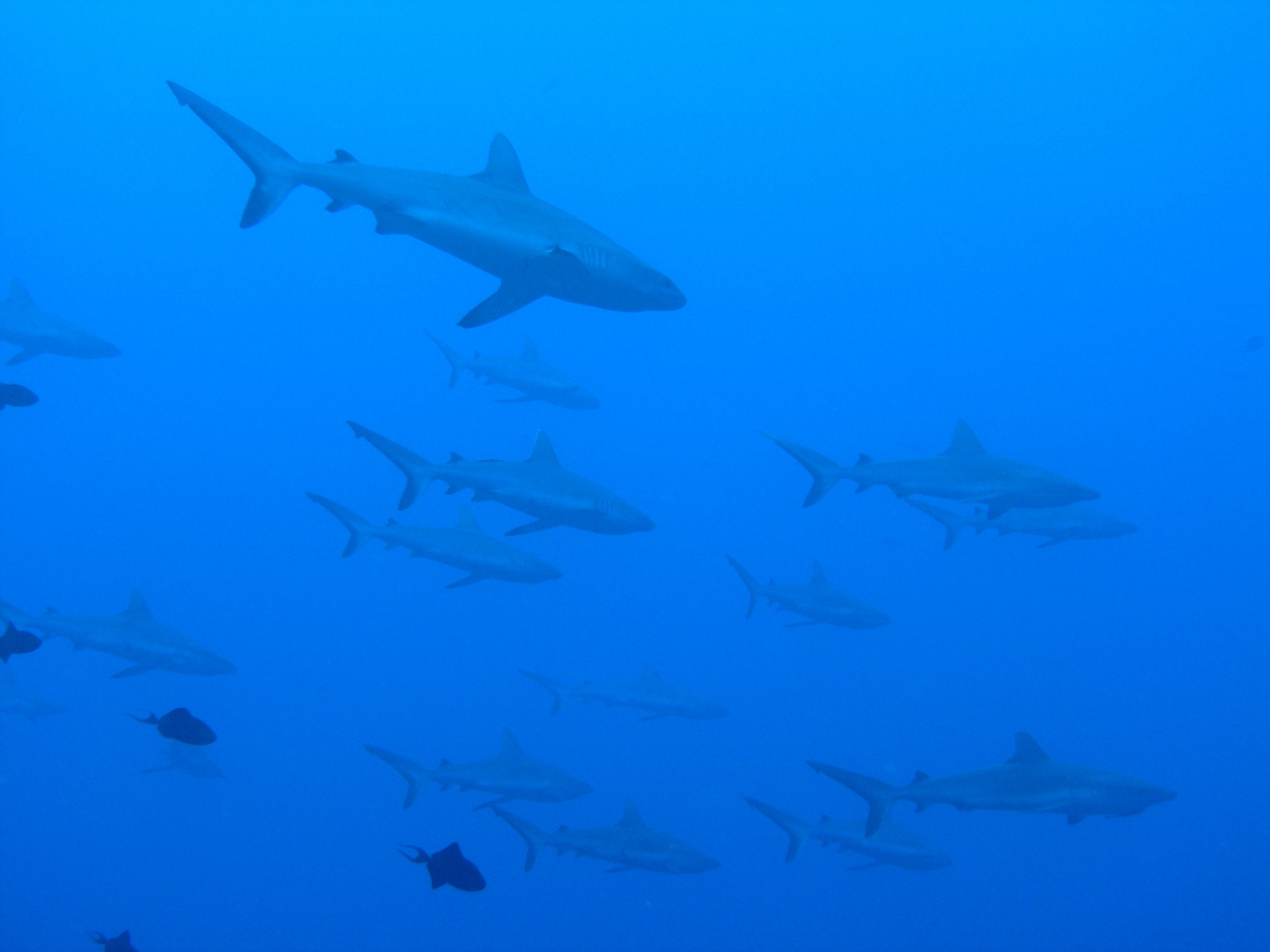 If you are a Survivor fan I’m going to spill the beans and tell you that the next Survivor is in Palau (again) and the one after that is Africa. So much for the employee’s confidentiality agreements! I don’t think it has been announced in the media yet so I just gave you privileged information. Funny, we would come across people and ask them if they are here with Survivor and they would reluctantly say yes. When I would ask them why they are so reluctant to answer, they would say they are not supposed to say they are here with Survivor. I just want to slap them and say “Then why don’t you answer my question with a NO, I’m just here to dive!”? Stupid college girls just want to seem cool. Anyway, there was an island that was off limits to everyone because that is where the Survivors were staying. It is amazing how well the producers make it seem that the Survivors are in the middle of nowhere and that they are thousands of miles from civilization when in reality there are dive boats zipping past their beach all day long. If you are a Survivor fan I’m going to spill the beans and tell you that the next Survivor is in Palau (again) and the one after that is Africa. So much for the employee’s confidentiality agreements! I don’t think it has been announced in the media yet so I just gave you privileged information. Funny, we would come across people and ask them if they are here with Survivor and they would reluctantly say yes. When I would ask them why they are so reluctant to answer, they would say they are not supposed to say they are here with Survivor. I just want to slap them and say “Then why don’t you answer my question with a NO, I’m just here to dive!”? Stupid college girls just want to seem cool. Anyway, there was an island that was off limits to everyone because that is where the Survivors were staying. It is amazing how well the producers make it seem that the Survivors are in the middle of nowhere and that they are thousands of miles from civilization when in reality there are dive boats zipping past their beach all day long.Like I said before, the diving is unbelievable. There are tons of sharks here. Next to Coco’s Island, Costa Rica, where we saw hundreds and hundreds of sharks, Palau is next in line for the immense number of sharks. It is a Chinese fisherman’s wet dream! Right now it is mating season for the sharks so the males are out in packs and are very aggressive. Normally they are alone and swim slow and gracefully. On one of our first dives, they were in packs of 8-12, swimming very fast, darting about quickly, looking for females to mate with.
You can easily identify the females because they have bite and cut marks all over their bodies from the males trying to grab and hold onto them while they mate. Unfortunately for a female, she will get attacked by several males at once, all of them wanting to mate with her. Many of the females even die because the males get so aggressive. So a few divers amongst all this forceful testosterone is a little freaky. Troy and I have been around a lot of sharks and are not scared of them at all, but these sharks definitely put us on edge. Palau is home of the famous Jellyfish Lake. The name says it all. It is a small saltwater lake which is fed by water seeping in through the limestone and is filled with millions of non-stinging jellyfish. They are all the same shape and color but range from the size of a quarter up to 8"-9" across. There is no place like this anywhere else in the world. In fact Palau has four of these jellyfish lakes but only one is open to the public. The lake was formed millions of years ago when the islands were underwater. When the islands rose from the sea, a species of jellyfish was trapped. Because no outside predators could get into the lake, the jellyfish lost their ability to sting because they didn’t need to defend themselves. As the jellyfish grew, they reproduced and had no way to leave the lake. Scientists believe the jellyfish have been untouched by the outside world for thousands of years so they live peacefully in their own little universe until it is invaded by hundreds of screaming Chinese tourists that don’t know how to swim. 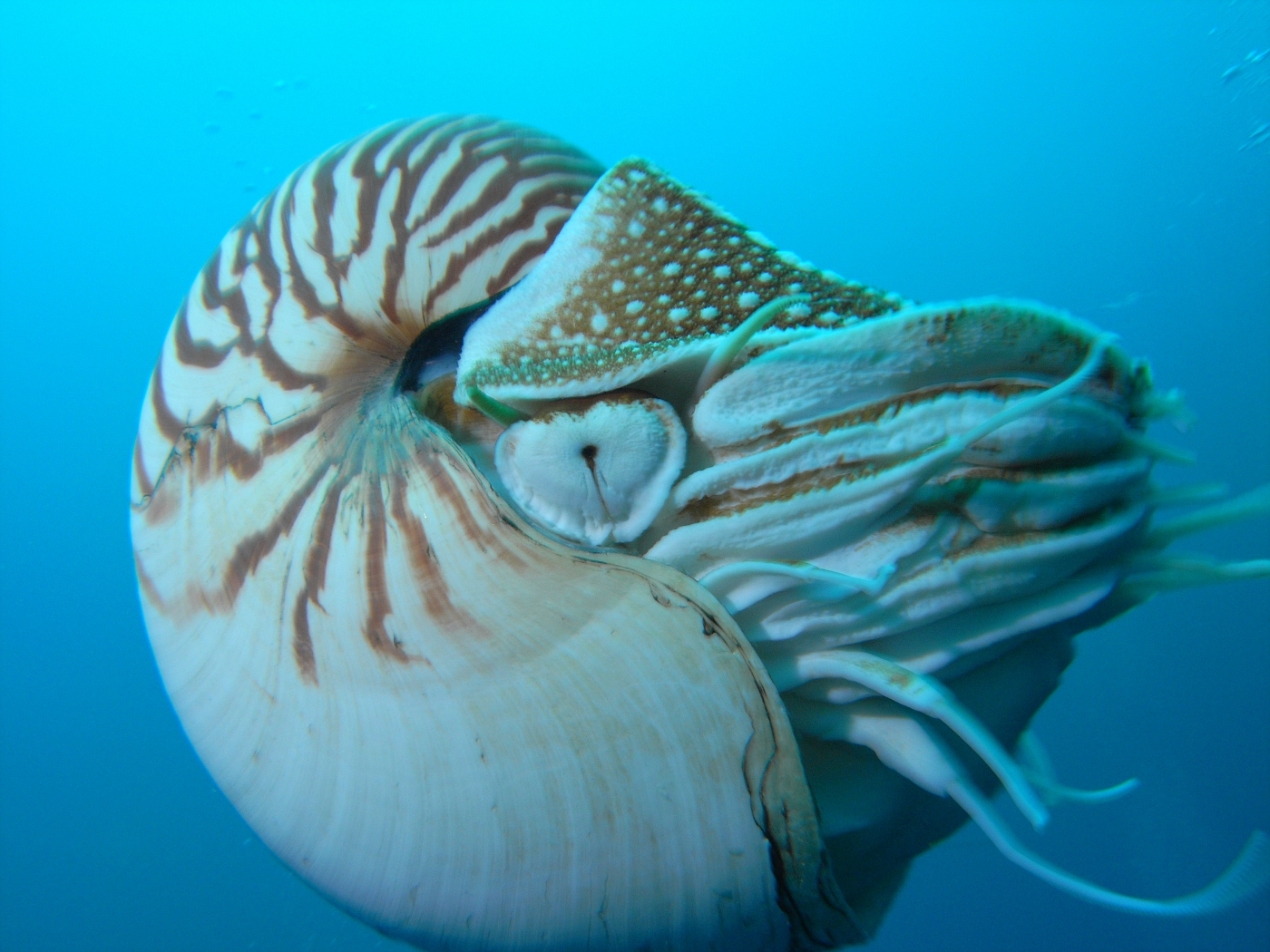 Palau also has an ancient creature that is only found in a few Pacific Islands. This is the Chambered Nautilus. Of the known seven species in the world, at least two are found in Palau. It is found near the Belau Trench - 27,000’ deep - which is one of the deepest trenches in the world. This animal is part of the octopus family but lives at great depths in the ocean – 1000’ and deeper. A diver will never come across it on a normal dive. If they do, they are really, really stupid and are somewhere they shouldn’t be - oh, and dead. The Chambered Nautilus is prehistoric because it has remained unchanged for millions of years and is considered a living fossil. They are extremely fragile, one bump on the reef and their shell breaks allowing them to the drift to the surface to die. The only way to see these beautiful creatures is on a staged dive. A cage has to be dropped down to about 600’ with something in the cage to attract the Nautlilus’ attention. For some reason they like chicken. The sticker and smellier the more attractive it is. So a smelly chicken is crucified and strung up in the cage and then dropped into the water overnight. The next morning, the cage is brought to the surface and the divers jump in to see how many were caught and to take as many photos as they can. Most marine animals can’t go from a depth of 1000’ to 8’ without exploding but the Nautilus has 38 chambers that allow the animal to regulate the air chambers so it won’t die. Palau also has an ancient creature that is only found in a few Pacific Islands. This is the Chambered Nautilus. Of the known seven species in the world, at least two are found in Palau. It is found near the Belau Trench - 27,000’ deep - which is one of the deepest trenches in the world. This animal is part of the octopus family but lives at great depths in the ocean – 1000’ and deeper. A diver will never come across it on a normal dive. If they do, they are really, really stupid and are somewhere they shouldn’t be - oh, and dead. The Chambered Nautilus is prehistoric because it has remained unchanged for millions of years and is considered a living fossil. They are extremely fragile, one bump on the reef and their shell breaks allowing them to the drift to the surface to die. The only way to see these beautiful creatures is on a staged dive. A cage has to be dropped down to about 600’ with something in the cage to attract the Nautlilus’ attention. For some reason they like chicken. The sticker and smellier the more attractive it is. So a smelly chicken is crucified and strung up in the cage and then dropped into the water overnight. The next morning, the cage is brought to the surface and the divers jump in to see how many were caught and to take as many photos as they can. Most marine animals can’t go from a depth of 1000’ to 8’ without exploding but the Nautilus has 38 chambers that allow the animal to regulate the air chambers so it won’t die. Next, we are off to Yap, just another unknown island where the use of Betlenut is even worse then Palau. Oh, I hope my stomach can handle it! Next, we are off to Yap, just another unknown island where the use of Betlenut is even worse then Palau. Oh, I hope my stomach can handle it!A friend said they love reading our blogs but we never say how we are doing. So if you're interested, we are fine. Healthy, no broken bones, no lost limbs, no strange tropical diseases, unless you count what the local food does to Troy, no shark bites (although my finger did get nipped by a "Shelly size" Napolean Wrasse because I tried to feed it sushi), Troy cut his hair so he no longer looks like a hippie, we've gained a pound or two from pure laziness and too many beers, we have not spent all our money and have yet to be arrested. And no, we don't know yet what we are going to do when are done with this trip, maybe just keep traveling since we have leftover money! |

